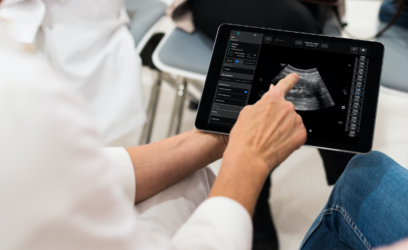What Can POCUS Diagnose?
Category
Blog
Date
July 29, 2021
Source
Exo

A major problem in healthcare today is poor accessibility for those living in rural areas. In fact, the patient-to-primary care physician ratio for those living in rural areas is 39.8 physicians per 100,000 people as opposed to 53.3 physicians per 100,000 people in urban areas. On top of that, those living in rural areas have more difficulties transportation-wise reaching a doctor than those in urban areas do. When you schedule patients from these areas for a follow-up appointment of some sort, the odds of their not showing up is high because of these accessibility issues.
Point-of-care ultrasound (POCUS) can help alleviate some of the effects of poor accessibility. What is a point-of-care ultrasound? It is a portable type of ultrasound that doctors can use at the patient’s point of care. When comparing a point-of-care ultrasound vs. an ultrasound that is stationary, you’ll find that POCUS is much smaller, easier to use, and less expensive than the stationary one. This blog will discuss POCUS uses and explore some of the conditions that POCUS can help diagnose.
What Is POCUS Used For?
There are three main POCUS uses: diagnostics, procedural guidance, and monitoring. Let’s take a closer look at each.
Diagnostics
Like stationary ultrasounds, a POCUS device uses a screen and a transducer to image different parts of the body. Unlike a stationary ultrasound, though, POCUS can pair with smartphones and tablets for portability. The most common body parts that POCUS devices capture images of are:
- Veins and arteries
- Uterus
- Heart
- Liver and gallbladder
- Muscles
- Lungs
- Skin tissues
- Kidneys and bladder
We will discuss specific conditions that POCUS devices can help diagnose later on.
Procedural Guidance
You can use POCUS devices to help you see inside the body during procedures. Specifically, ultrasounds help with:
- Fluid extraction
- Biopsy guidance
- Draining cysts and abscesses
- The treatment of some tendinitis
Through their use during procedures, POCUS devices can “increase first pass success and decrease complications.” This, in turn, will lead to happier, healthier patients.
Monitoring
After a procedure, it is important to make sure that your patient is healing well. POCUS allows you to see inside your patient’s body to make sure everything looks how it should. You can also monitor for any forms of non-traumatic shock caused by a medical condition or procedure. This is important, as the mortality rate of non-traumatic shock is 36%-60%. By monitoring a patient from the beginning, you can decrease their odds of dying from shock.
What Can an Ultrasound Detect?
According to the American Academy of Family Physicians (AAFP), a POCUS exam can help you detect and diagnose many conditions throughout the body, including:
- Abdominal Aortic Aneurysm (AAA): POCUS devices have 100% sensitivity and specificity when screening for AAA. Screenings for this condition are important because they decrease the chances of rupture mortality by 34%.
- Deep Venous Thrombosis (DVT): POCUS devices have 96% sensitivity and 97% specificity for detecting DVT. Using these devices can reduce the number of patients who need hospitalization and/or empiric anticoagulation to confirm whether they have this condition. If left untreated, the mortality rate for this condition is as high as 30%.
- Causes of Respiratory Distress: When used in the emergency department, “POCUS of the lung decreases emergency department diagnostic time by two hours on average compared with standard radiography, computed tomography (CT), or echocardiography.” POCUS also is more sensitive than plain radiography in diagnosing conditions such as pleural effusion and pulmonary contusion.
- Skin or Soft Tissue Infections: Using POCUS devices reduces the failure-to-diagnose rate of abscess and “decreases inappropriate incision and drainage of cellulitis without abscess by up to 20% compared with clinical examinations.”
- Appendicitis: POCUS can confirm that a patient has appendicitis but does not rule it out if the ultrasound does not detect it.
- Biliary Colic: POCUS can detect cholecystitis well when gallstones are present.
- Bowel Perforation: “POCUS had 92% sensitivity in the detection of free air compared with 78% for upright chest radiography.”
For a list of other conditions and diseases that POCUS can help detect, check out the AAFP website.
Improve POCUS Workflow with Exo Works™
Documenting your POCUS findings should be quick and simple. Exo Works can help with that. Using our solution, you can document exams within seconds from anywhere so that you can focus on patient care. You can even automatically save scans to EMR and PACS for billing and storage. Ready to learn more? Book a demo to find out how Exo Works can improve your POCUS workflow.